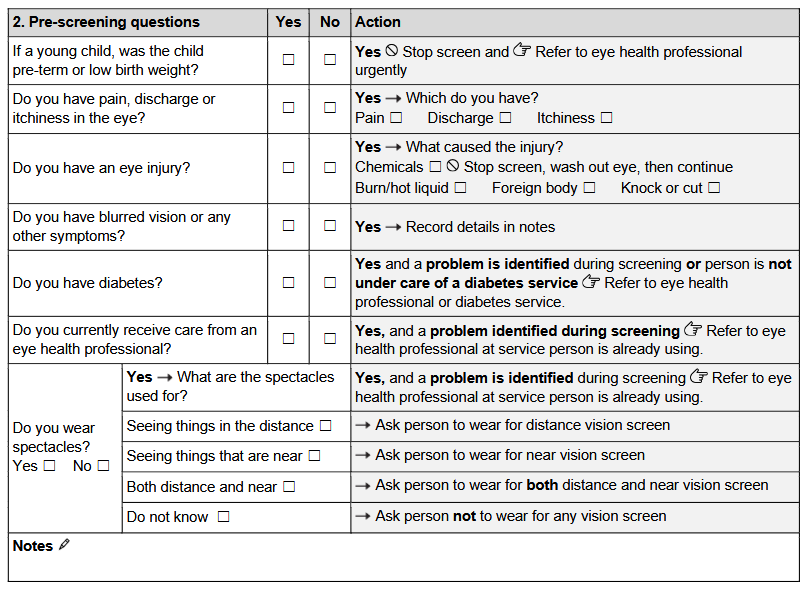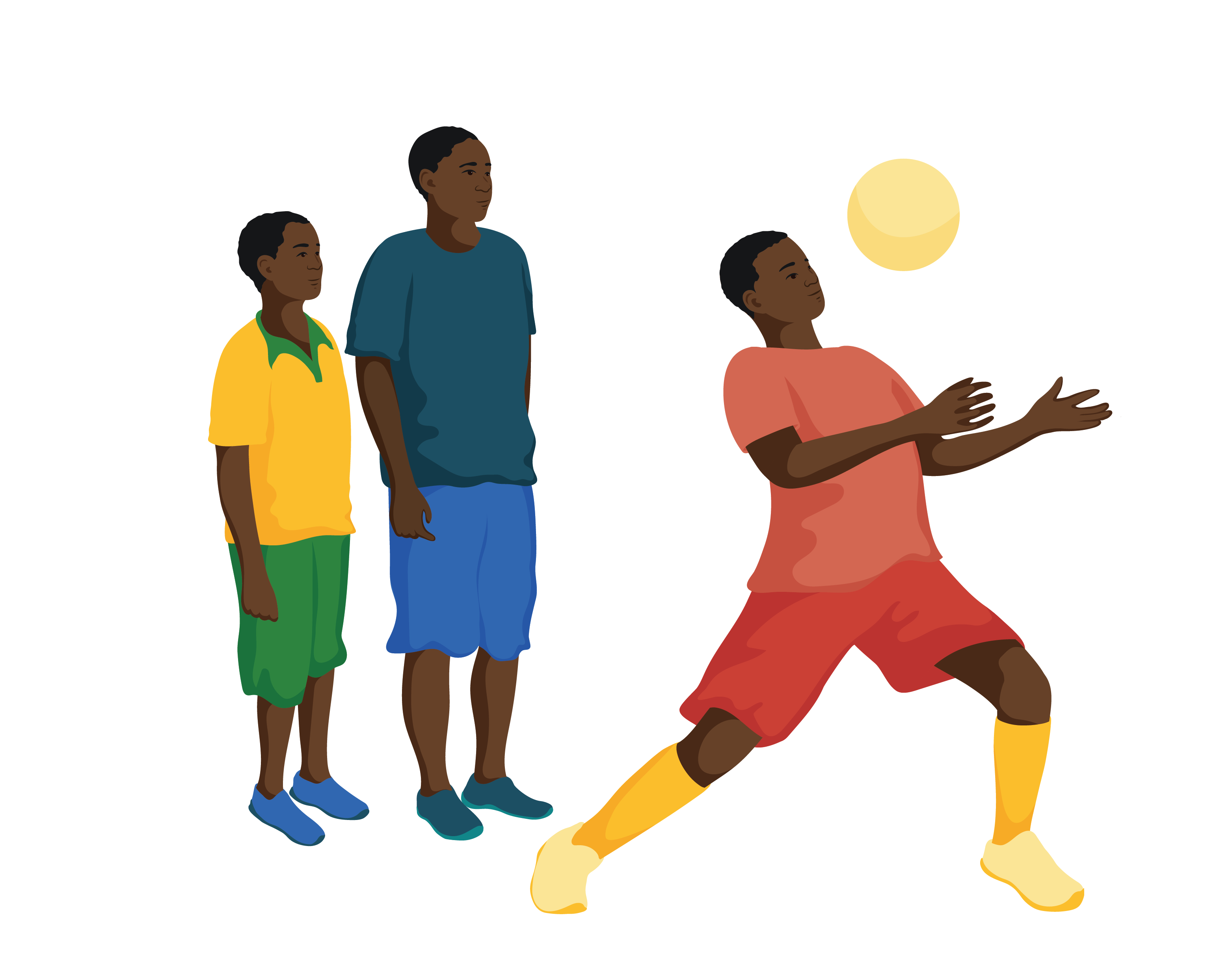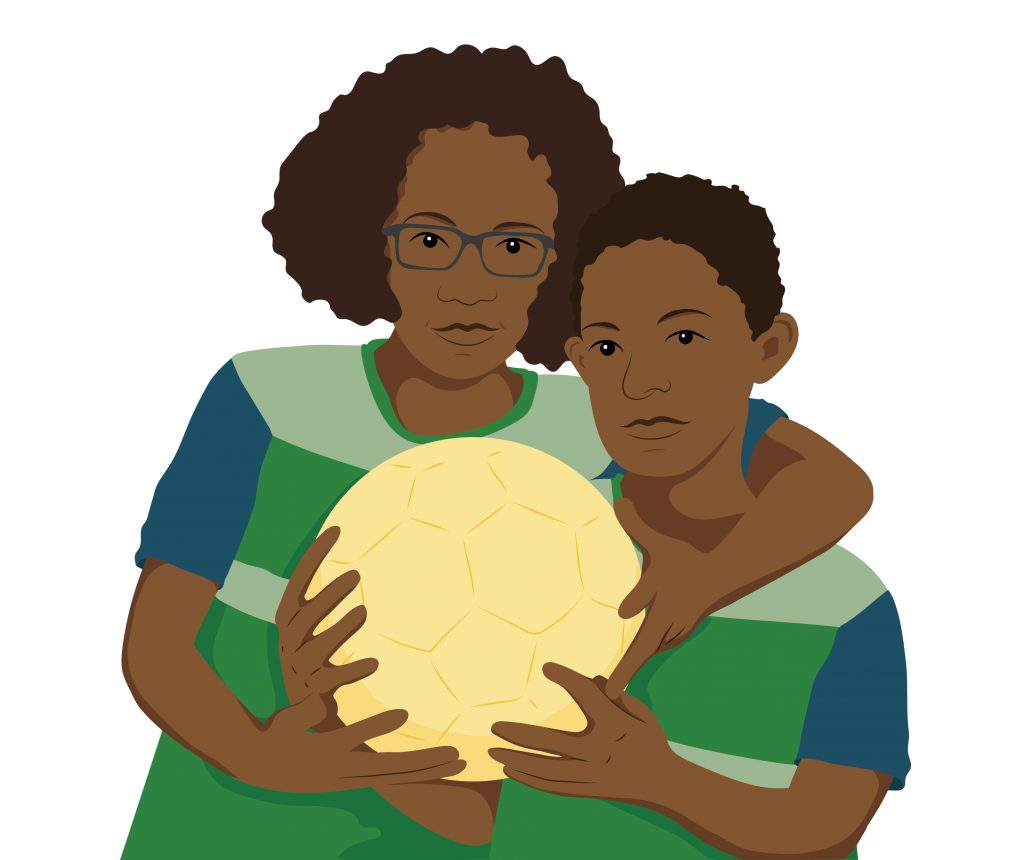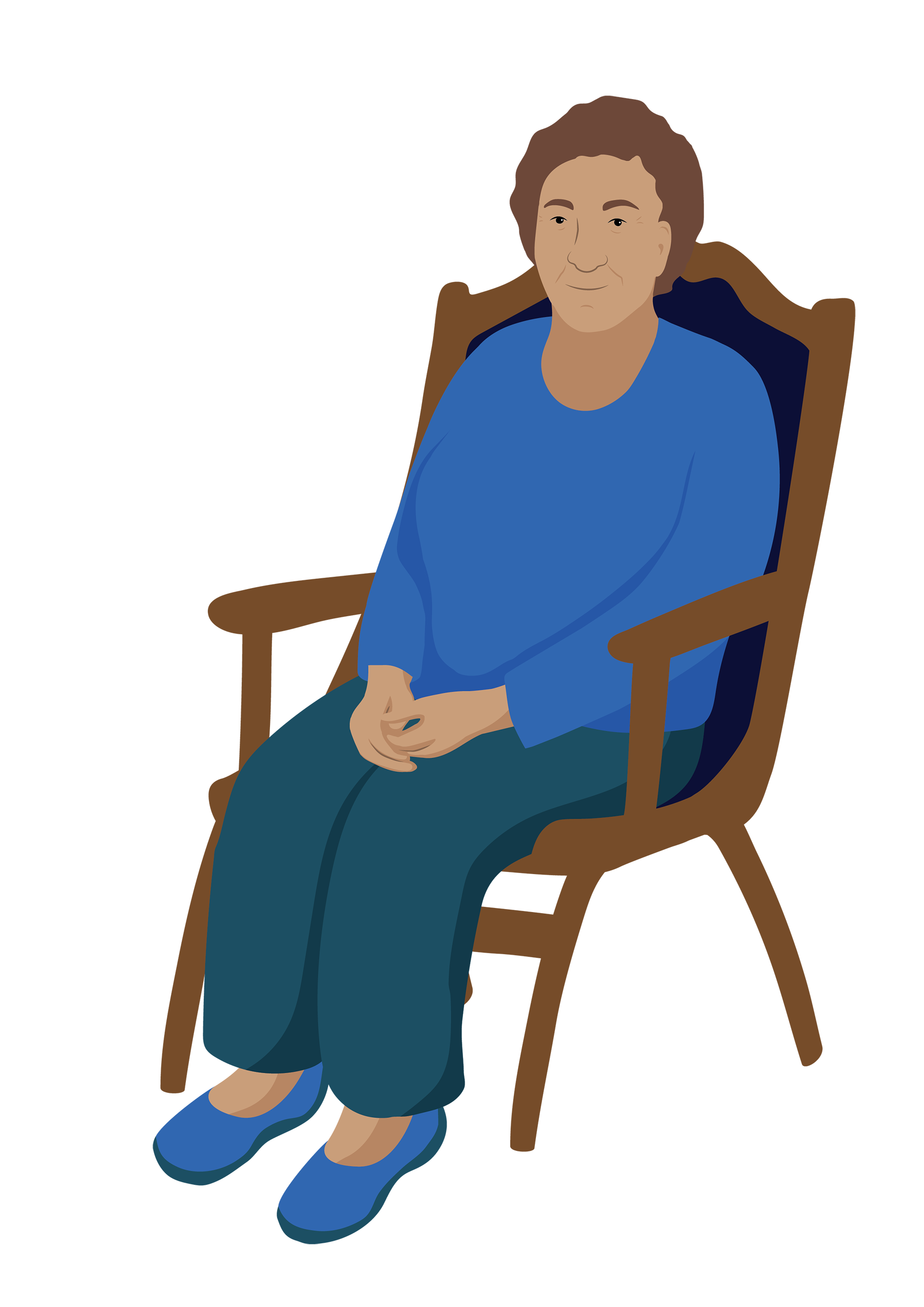Kujifunza kwenye fomu ya upimaji wa huduma ya msingi ya macho ya TAP
Use the Learning on TAP primary eye care screen form (PEC Screen form) to:
- Guide you through the screening process
- Kuweka rekodi ya matokeo ya upimaji
- Plan and record actions based on the results.
The form has six sections:
- taarifa kuhusu mtumiaji
- Maswali ya awali kabla ya kuanza upimaji
- Upimaji wa kuona
- Upimaji wa afya ya macho
- Action taken
- Follow up.
Maelekezo
If you haven’t already, download the PEC Screen form and print a copy.
You can also download or print this Primary eye care quick reference guide to remind you of the Learning on TAP primary eye care screening process.
If you are unable to download the forms, don’t worry. Questions on the PEC Screen form are shown as you go through this section of the module.
Dokezo
The PEC Screen form has four icons:
Space for you to write information
Follow the instruction to the next step
Stop the screen and follow the instruction
The person may need to be referred to an eye health professional or another service.
Anza kwa kurekodi:
- Jina la upimaji
- Tarehe ya upimaji
- Mahali ambapo upimaji unafanyika.
taarifa kuhusu mtumiaji
The first part of the screen involves collecting information about the person (and their caregiver where relevant) and asking for consent.
Greet the person and introduce yourself. Collect and record the person’s details on the PEC Screen form. This includes their name, date of birth, gender and contact details.
Idhini
Explain that you will:
- Ask for details about vision or eye problems
- Complete a vision screen
- Check for signs of any eye health problems
- Discuss the results with them and decide on a plan together.
Maelekezo
Muulize:
- Do you have any questions?
- Are you happy to continue?
Record consent on the PEC Screen form by ticking the relevant box.
Endelea tu ikiwa idhini imetolewa.
Dokezo
If consent is not given, ask if the person would like more information or reassurance about the screen. Answer any questions they have.
When working with a child, you must ask for consent from the child’s parent or caregiver. Allow time for them to talk with the child if needed and answer any questions they have.
Majadiliano
How could you use a child-friendly approach to introduce yourself and explain what you will do when working with a child?
Discuss with your colleagues.
- Kaa kulingana na kimo cha mtoto
- Smile and look at the child
- Let the child see the equipment you will use
- Wahakikishie kile unachokifanya kuwa hakina madhara yoyote
- Eleza mambo polepole na kagua kama mtoto ameelewa.
Maswali ya awali kabla ya kuanza upimaji
Dokezo
The grey Action column indicates any specific actions you need to take.
If there is a stop screen icon, stop the screen and follow the instruction.
Otherwise, continue the screen and follow the instruction.

Pre-term or low birth weight baby
Maelekezo
If the child is under five years old, ask: Was the child pre-term or low birth weight?
- If no continue
- If yes,stop the screen and refer to an eye health professional urgently.
Pain, discharge and itchiness
Maelekezo
Ask: Do you have pain, discharge or itchiness in the eye?
- If no continue
- If yes record details and continue.
Eye injury
Maelekezo
Ask: Do you have an eye injury?
- If no continue
- If yes ask: What caused the injury?
Onyo
If the injury was caused by chemicalsstop the screen and wash out the eye immediately, then continue.
For all other injuries record details and continue.
Swali

Kutana na Dembe
Dembe is 13 years old. He lives with his parents and four siblings. Dembe loves to play football with his friends in a local league.
Dembe and his father come to your health centre with an injury to Dembe’s eye. He was helping his father fix a motorbike engine and got engine coolant in his eye.
Unapaswa kuchukua hatua gani?
Chagua jibu moja.
Uko sahihi kama umechagua " b" kama jibu sahihi
Dembe has a chemical injury. You should stop the screen immediately and wash out his eye before continuing the screen.
Maelekezo
You will learn how to wash out an eye in the Managing vision and eye health problems module.
Other symptoms
Maelekezo
Ask: Do you have blurred vision or any other symptoms?
- If no continue
- If yes record details and continue.
Kisukari
Maelekezo
Ask: Do you have diabetes?
- If no continue.
Onyo
If yes and a problem is found during screening or the person is not under the care of a diabetes service, finish the screen then refer to an eye health professional or diabetes service.
Swali
Why is it important to refer a person with diabetes to an eye health professional or diabetes service?
Diabetes can affect eye health. Over time this can cause vision loss or blindness.
However, this can be prevented with early identification of problems and treatment.
It is important that people with diabetes have regular reviews of their vision by an eye health professional.
They should also have regular health checks by a diabetes service.
Care from an eye health professional
Maelekezo
Ask: Do you currently receive care from an eye health professional?
- If no continue
- If yes and a problem is found during screening, finish the screen then refer to the eye health professional that the person is already using.
Miwani ya macho
Maelekezo
Ask: Do you wear spectacles?
- If no continue
- If yes check if they are used for:
- Kuona mambo kwa mbali
- Seeing things that are near
- Both distance and near.
If the person:
- Wears spectacles for seeing things in the distance, they should be worn for the distance vision screen
- Wears spectacles for seeing things that are near, they should be worn for the near vision screen
- Wears for both seeing things in the distance and near, they should be worn for both distance and near vision screens
- Does not know what the spectacles are for, they should not be worn during the vision screen. This could lead to an incorrect result.
If the person wears spectacles and you identify a problem during the primary eye care screen, finish the screen and refer to an eye health professional.
Swali

Remember Alitia?
Alitia is short-sighted and wears prescription spectacles.
Should Alitia wear her spectacles for the distance vision screen?
Chagua jibu moja.
Jibu sahihi ni "Ndiyo"!
Alitia is short-sighted. This means she wears her prescription spectacles for seeing things in the distance. She should wear her spectacles for the distance vision screen.
Kazi

UnamKumbuka Luciana?
Luciana is 73 years old and lives with her husband Jose. She attended an appointment for primary eye care with the help of Jose. Luciana:
- Has a small lump on her right lower eyelid
- It is mildly painful
- There is no discharge, and no itchiness
- Does not have blurred vision and has not had an injury to her eye
- Has no other symptoms
- Does not wear spectacles
- Has diabetes
- Is under the care of a diabetes service where she has regular vision and eye health screens.
Complete the pre-screening questions section of the PEC Screen form for Luciana.


